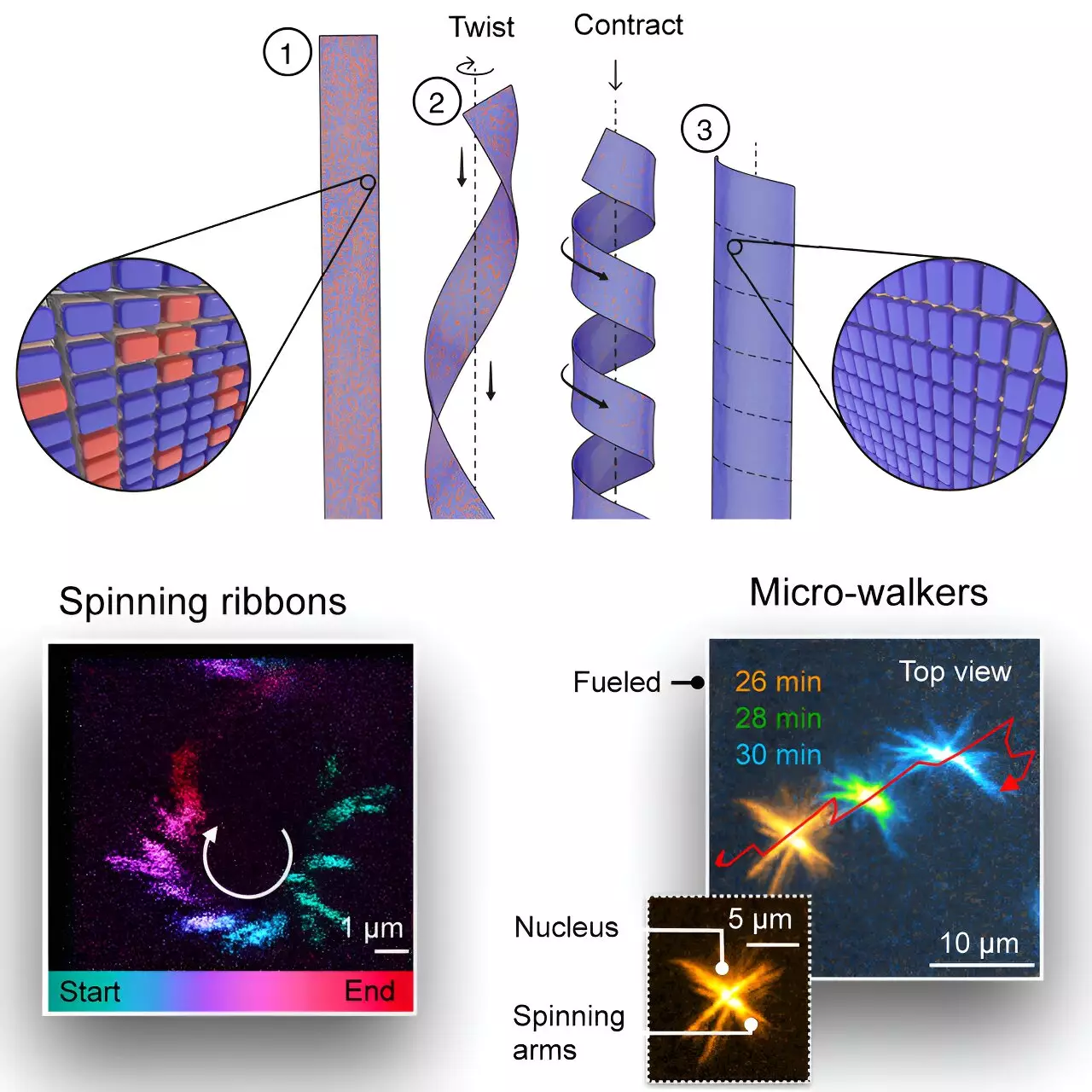Researchers at the Technical University of Munich (TUM) have made a groundbreaking discovery in the realm of nanotechnology with the introduction of a supramolecular motor that can exhibit remarkable capabilities. This innovation represents a substantial leap forward in the understanding and application of synthetic motor functions at the molecular level. The newly designed motor is not merely a theoretical concept; it is a functional, programmable device capable of converting chemical energy into mechanical motion on an incredibly small scale.
At its core, this tiny motor is constructed from specialized peptide ribbons. When a chemical fuel is introduced, these ribbons align and twist, behaving similarly to a fin. This movement generates enough force to push and manipulate small objects. The implications of this discovery are significant, as previously, small motors that operate in this manner had only been observed in biological processes, specifically in archaea using adenosine triphosphate (ATP) as a fuel source to power their flagellar motion.
What sets the TUM motor apart is not just its ability to perform similar tasks but its potential for real-world applications. The researchers have successfully demonstrated that varying amounts of chemical fuel can control the rotation speed of the ribbons, influencing both the velocity and direction of movement. This nuanced control could lead to precise applications in nanomedicine, where fine motor functions are essential.
Looking forward, the potential applications of these nanomotors are extensive. One of the most exciting prospects involves their use in targeting and eradicating cancer cells. The technology opens doors to the creation of nanorobots that could navigate through the bloodstream, specifically identifying and interacting with tumor cells. By harnessing this technology, healthcare providers could introduce novel treatment methods that deploy drugs selectively, reducing side effects and increasing efficacy.
However, it’s worth noting that the chemical fuel currently used poses limitations concerning feasibility and safety. While the operational mechanics have been proven, the search for an alternative fuel that is biocompatible remains an ongoing challenge. The development of such a fuel is critical for transitioning these advanced motors from laboratory curiosities into practical health solutions.
This project is not solely the achievement of a single team; it represents a collaborative effort that includes insights from molecular biophysics and advanced measurement techniques. The combined expertise of materials scientists and biophysicists has illuminated previously obscured paths toward harnessing supramolecular technology.
As researchers continue to refine the design and functionality of these nanomotors, the future appears bright. They may pave the way for “micro-walkers,” using multiple ribbons to produce locomotive capabilities. Such innovations may eventually usher in a new era of therapeutic devices capable of autonomously traversing the human body, conducting tailored drug delivery and real-time cellular monitoring.
The development of this artificial motor at the supramolecular level not only symbolizes a technological milestone but also sets the stage for future advancements in various fields, especially medicine. By merging chemistry with engineering, researchers at TUM are catalyzing a revolution in nanotechnology that holds the promise of vastly improved medical treatments and patient outcomes. As they continue to address current limitations and explore new applications, the possibilities of these molecular motors are boundless, and their impact on the fields of science and healthcare could be transformative.


Leave a Reply